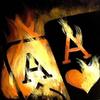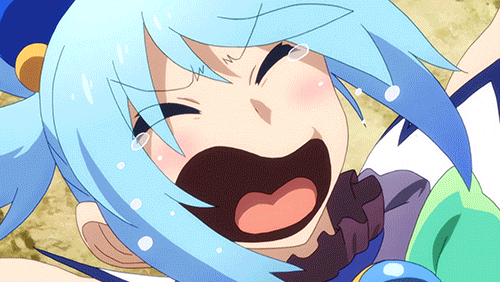Dukasaur
History of Nuclear War VIII This is the eighth tournament in a series which explores the history of nuclear war. This tournament will focus on the Cold War. It is the Sunny counterpart to History of Nuclear War III. For more information on this series, visit the
History of Nuclear War Series InfoCentre Eligibility: To play in this tournament, you must be premium, have a turns-taken record of 97% or better, at least 100 completed games, and be at least a PFC on sign-up.Procedure: In each tourney in this series, the first nine phases will consist of multiplayer Standard games. In each of these phases, only the first player eliminated from each game is eliminated from the tournament. All others will continue to the next phase. As soon as all games in a phase have had one player eliminated, I will begin the next phase with the survivors. Winning these games will not influence the course of the tournament; only that first elimination is significant.Settings: All games will be Casual, Automatic, Chained, No Fog and No Trench. Maps will vary widely from phase to phase. Needless to say, spoils in all games will be nuclear.show: Phase 1
At the end of WWII, the U.S. was the only nuclear-armed nation on earth. Others were continuing their efforts, and by 1949 the Soviet Union deployed its first nuclear weapon.Phase 1 first player eliminated in each game is out of the tournament. The remainder will go on to the next round.
show: Phase 2
If anyone had thought that the end of WWII would mean a time of peace, they were soon disappointed. Even before the war had ended, the major powers had been jockeying for postwar position. In Europe there was a consolidation of Communist power in Russian-occupied Eastern Europe, but no direct military challenge was mounted, because neither the Americans nor the Russians wanted outright war between themselves.de facto partitioned, and in 1950, when the North invaded the South, a full-scale war erupted.Phase 2 first player eliminated in each game is out of the tournament. The remainder will go on to the next round.
show: Phase 3
On November 1st, 1952 the U.S. tested the first the thermonuclear weapon, based on a design that Edward Teller had been advocating since his days with the Manhattan Project. The device was 450 times as powerful as the bomb that had been dropped on Hiroshima. Detonated on Elugelab Island, it obliterated the island and left a crater 2 miles wide where the island had been.Phase 3 first player eliminated in each game is out of the tournament. The remainder will go on to the next round.
show: Phase 4
With nuclear war seeming imminent, nations gave significant thought to issues of civil defense. Although there was virtually nothing that could save a person caught near Ground Zero in a nuclear strike, it was thought that survival techniques and fallout shelters could significantly improve the chances of those who were further away. The usefulness of civil defense techniques and self-preservation techniques like "Duck and Cover" has always been hotly debated.Phase 4 first player eliminated in each game is out of the tournament. The remainder will go on to the next round.
show: Phase 5
While hot wars raged in East Asia, and the industrial capacities of the U.S. and U.S.S.R. were harnessed for the Arms Race, the iconic Cold War scenario was played out in the city of Berlin. Here British, French, American, and Russian forces actually saw each other on a daily basis. Provocations took place, but never erupted into actual combat.Phase 5 first player eliminated in each game is out of the tournament. The remainder will go on to the next round.
show: Phase 6
In 1959 Fidel Castro succeeded in leading a Communist revolution in Cuba. The CIA, encouraged by its successful counter-revolutions in Iran and Guatemala, organised the Bay of Pigs counter-invasion, which failed disastrously.Vasili Arkhipov , has been called the "man who saved the world."Phase 6 first player eliminated in each game is out of the tournament. The remainder will go on to the next round.
show: Phase 7
After having come to the edge of open war in the Berlin Crisis and the Cuban Missile Crisis, the superpowers both retreated from such brinksmanship and reverted to proxy wars. Communist or communist-sympathetic revolutions either continued or began across much of Africa and Asia. To a large degree, many of the revolutionaries were not, strictly speaking, communist in their outlook, but they turned to the Soviet Union for aid because the regimes they were fighting were either European colonial empires or post-colonial governments with strong ties to the West.Phase 7 first player eliminated in each game is out of the tournament. The remainder will go on to the next round.
show: phase 8
In Indochina, a proxy war spun out of control, as successive American governments attempted to save an anti-communist regime in South Vietnam from its communist counterpart in North Vietnam. Starting with a small handful of observers and trainers, the American mission in South Vietnam gradually became a full-scale military deployment. It is a popular myth that the Americans "lost" the Vietnam war. In fact, in every single engagement the Americans succeeded in beating the NVA back. The American withdrawal took place because the War had become a political liability at home. At the time of the withdrawal, not a single town in the South was under Viet Cong or NVA control.after the American withdrawal was the North confident enough to resume the war. Fully rested and re-equipped with brand-new Soviet military hardware, including 700 new tanks, the NVA was able to finally defeat the South.Phase 8 first player eliminated in each game is out of the tournament. The remainder will go on to the next round.
show: Phase 9
During the era of proxy wars, the U.S. had somewhat de-emphasized its nuclear arsenal while the Soviets had built more nukes at an increasing rate. By 1978, for the first time, the Russian stockpile of 25393 nuclear warheads exceeded the American stockpile of 24826. Soviet military expenditures by this point constituted 25% of their GNP. Although that level of expenditure was slowly bankrupting the Soviet economy, this was not clearly visible to the outside world. With new (largely anti-American) revolutions overthrowing the governments of Nicaragua and Iran, it seemed to many that the West was losing the Cold War.Phase 9 first player eliminated in each game is out of the tournament. The remainder will go on to the next round.
The finals will be different from the first nine phases. show: Phase 10 - Finals - The nuclear cataclysm
Phase 10: The nuclear cataclysm
For more information on this series, visit the
History of Nuclear War Series InfoCentre Last edited by
Dukasaur on Mon Jun 16, 2014 12:59 am, edited 13 times in total.
“Life is a shipwreck, but we must not forget to sing in the lifeboats.”

 Dukasaur
Dukasaur






























 3
3




 2
2



 Dukasaur
Dukasaur






























 3
3




 2
2



 Beko the Great
Beko the Great























 Kid Moe
Kid Moe

























 TX AG 90
TX AG 90




























 crazy4catnip
crazy4catnip



























 sparkyball
sparkyball



















 _Member__
_Member__
 _Member__
_Member__

 aalii
aalii



























 PaRKoN
PaRKoN






















 Marshallbobby
Marshallbobby






















 Jessamine
Jessamine



















 musteriuz
musteriuz





































































